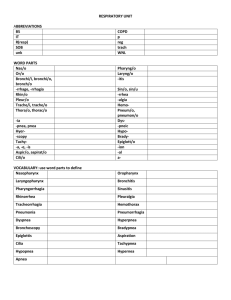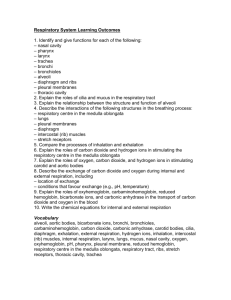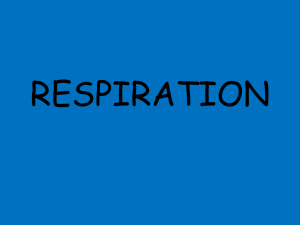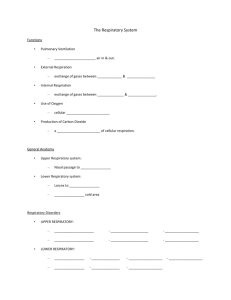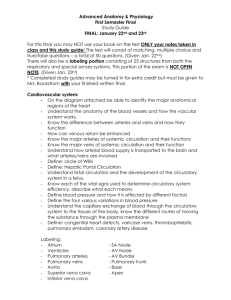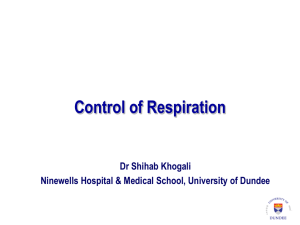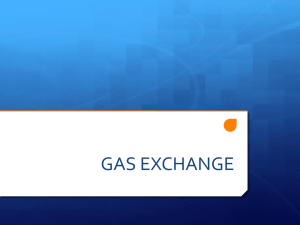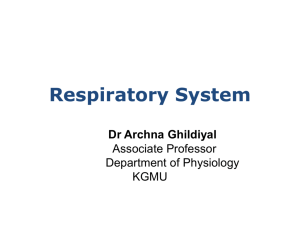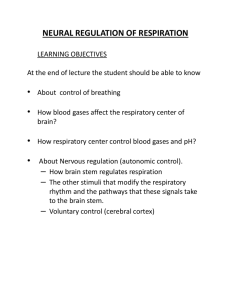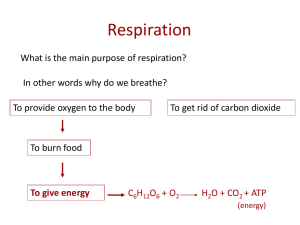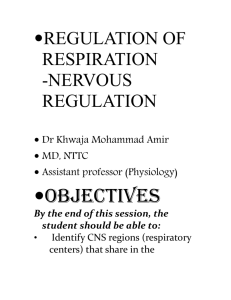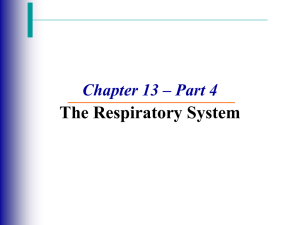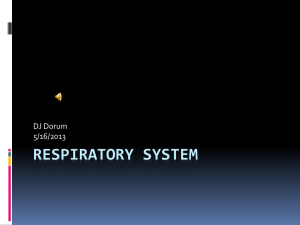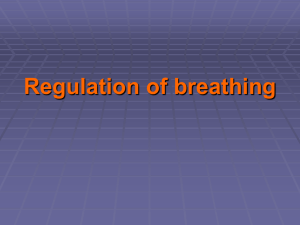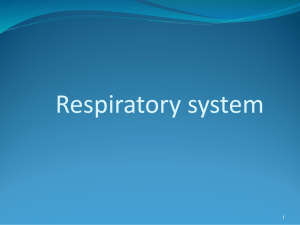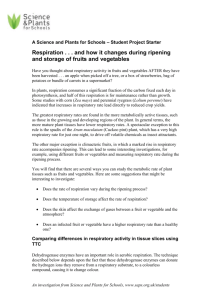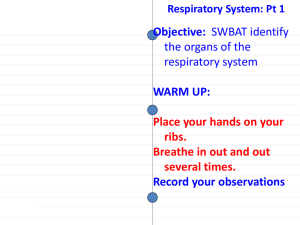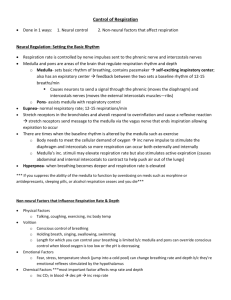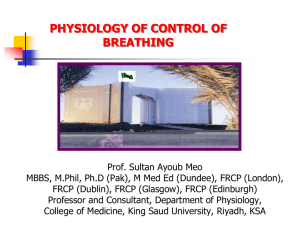Control of Respiration
advertisement
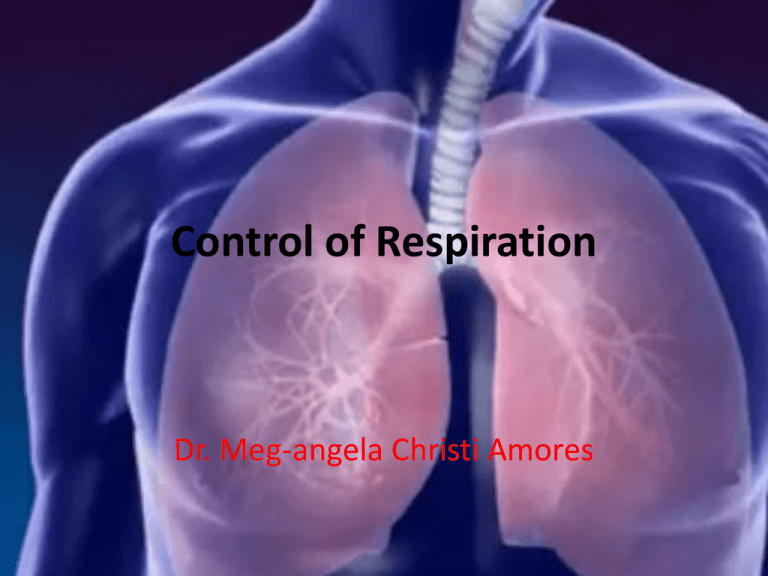
Control of Respiration Dr. Meg-angela Christi Amores Control of Respiration • Central o Respiratory Center o Bilaterally in the medulla oblangata and pons 1. Dorsal Respiratory Group – dorsal medulla – Mainly inspiration and rhythm of breathing 2. Ventral Respiratory Group – ventrolateral medulla – Either inspiration or expiration 3. Pneumotaxic Center – dorsal superior pons – Controls rate and pattern of breathing Dorsal Respiratory Group • Generates basic rhythm of respiration • Operates on a “ramp” signal • Begins weakly and increases steadily for about 2 seconds, then ceases abruptly for next 3 secs. • Turns off excitation of diaphram, allows elastic recoil • 2 ways of control: 1. Control of rate of increase of ramp signal 2. Control of limiting point at which ramp signal ceases Pneumotaxic Center • Control “switch off” point of inspiratory ramp • If strong, inspiration is 0.5 seconds, filling lungs only slightly • Primary function is to limit inspiration Ventral Respiratory Group • Inactive during normal quiet respiration • No participation in rhythm control • Contributes to respiratory drive when pulmonary ventilation increases • Some neurons excite – inspire • Other neurons excite – expire • Useful in heavy breathing Chemical Substances • Oxygen • No significant direct effect, instead, regulates respiration on its effect on peripheral chemoreceptors • Carbon Dioxide • Potent indirect effect • Excess concentration in blood acts directly on respiratory center itself • Hydrogen • Excites sensory neurons in chemosensitive areas • Cannot cross blood brain barrier Control of Respiration • Peripheral – Chemoreceptors – special nervous chemical receptors located in several areas outside brain • Detects changes in oxygen concentration in blood • Transmits nervous signals to the respiratory center to the brain • Mostly in Carotid bodies and Aortic bodies – Decreased arterial O2 concentration in blood – Increased CO2 and H ion concentration Chemoreceptors Factors that Affect Respiration • Voluntary control • One can hyperventilate/hypoventilate • Nervous pathway for voluntary control passes directly from cortex and down the corticospinal tract, not through the respiratory center Factors that Affect Respiration • Effect of Irritant receptors in Airways • Epithelium in trachea, bronchi, bronchioles – sensitive • Cause cough and sneeze • Also cause bronchial constriction – as in BA and Emphysema Factors that Affect Respiration • Function of lung “J” receptors • Sensory nerve endings in alveolar walls, in juxtaposition to pulmonary capillaries • Excitation gives feeling of dyspnea • Effect of brain edema • Activity of respiratory center may be decreased or inactivated by acute brain edema due to blockage of blood supply • Anesthesia • Most prevalent cause of respiratory depression and arrest • Eg Na pentobarbital, morphine overdose Abnormalities in Respiratory Control • Periodic breathing • (e.g. Cheyne-Stokes breathing) • Waxing and waning respiration • 40-60 seconds – Due to: 1. Long delay of transport of blood carrying O2 – As in severe heart failure 2. Increase negative feedback gain – Brain damage
